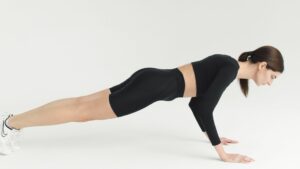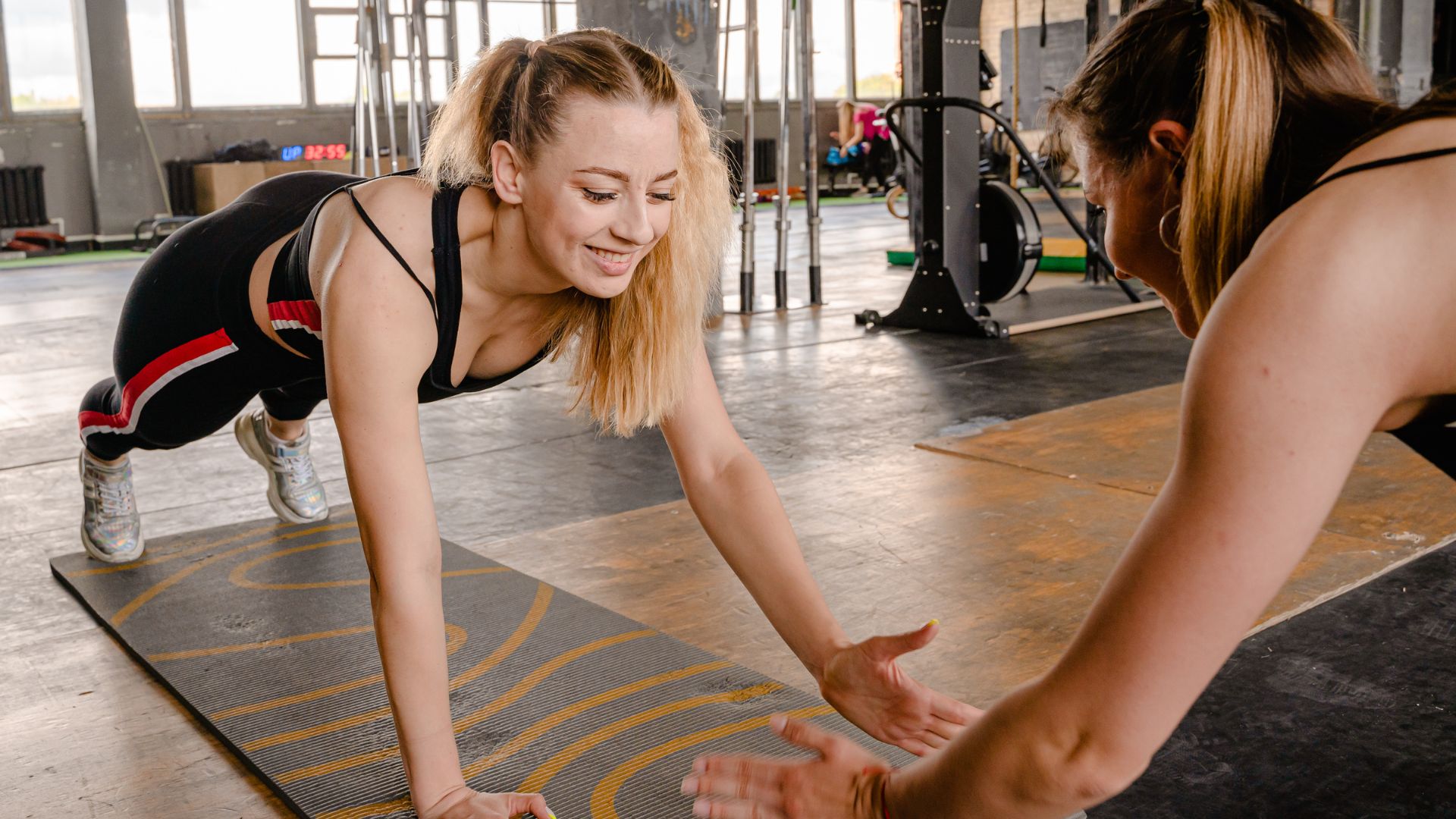The number of pushups considered safe may vary depending on individual fitness level and health status.
It’ can vary depending on several factors, such as age, sex, fitness level, and overall health.
However, here is a sample chart table that provides general guidelines for safe pushup numbers based on age and sex:
| Age Group | Male (Safe Number) | Female (Safe Number) |
|---|---|---|
| 20-29 | 35-44 | 15-24 |
| 30-39 | 29-38 | 12-21 |
| 40-49 | 23-34 | 8-17 |
| 50-59 | 20-30 | 6-16 |
| 60+ | 17-27 | 4-13 |
These numbers are based on a study by the American Council on Exercise, which analyzed pushup data from over 1 million adults. However, it’s very important to remember that these numbers are just guidelines and may not apply to everyone.
It’s always best to consult with a professional before starting any new exercise program, especially if you have any underlying health conditions or injuries.
However, there are gains to doing pushups regularly, and some studies suggest there may be a minimum number of pushups that can reduce the risk of heart disease. Here are five reasons why you may want to consider doing pushups regulaly: improved in Muscle Mass, inprove in cardiovascular Health, convenience to do, strengthening of Muscles, and eazy customizable.
Note:
It’s very important to consult a doctor before starting any new exercise program, especially if you have pre-existing health conditions.

Improve muscle mass.
Pushups are a type of strength training exercise that work the muscles in the chest, shoulders, and upper arms. When performed regularly, they can help to build and improve muscle mass in these areas.
During a pushup, the muscles in the chest and shoulders are activated as you lower your body towards the ground, and the triceps (muscles in the back of the upper arm) are activated as you push your body back up.
The core muscles are also engaged to help stabilize the body during the movement.
As you perform pushups, the muscles in these areas are repeatedly contracted and relaxed, which causes tiny tears in the muscle fibers.
During rest and recovery periods, the body repairs these tears by building new muscle tissue. This process is called muscle hypertrophy, and it leads to an increase in muscle size and strength.
Over time, as the body adapts to the stress of pushups, you may need to increase the number of reps or do more challenging variations to continue to see improvements in muscle mass.
Proper nutrition and adequate rest are also important factors in building and maintaining muscle mass.
Pushups can be a highly effective exercise for building muscle mass in the chest, shoulders, and upper arms, and can be a valuable addition to a well-rounded strength training program.
Here is a sample chart table based on the pushups:
| Pushup Variation | Primary Muscles Targeted | Difficulty Level |
|---|---|---|
| Standard Pushup | Chest, Shoulders, Triceps | Intermediate |
| Wide-Grip Pushup | Chest, Shoulders | Intermediate |
| Diamond Pushup | Triceps, Chest | Advanced |
| Incline Pushup | Upper Chest, Shoulders | Beginner |
| Decline Pushup | Lower Chest, Triceps | Advanced |
| Plyometric Pushup | Chest, Shoulders | Advanced |
This chart table shows several pushup variations and the primary muscles they target, as well as their difficulty level. This can help individuals choose the appropriate variation based on their current fitness level and goals.
Cardiovascular health improvement
Pushups can also benefit cardiovascular health by reducing the risk of heart disease. The heart is a muscle, and just like other muscles in the body, it can be strengthened through regular exercise.
Pushups are considered a type of resistance exercise, which means they require the heart to work harder to pump blood to the muscles being worked.
According to a study conducted by researchers at the Harvard T.H. Chan School of Public Health, men who can do more than 40 pushups in one go have a 96% lower risk of developing heart disease than those who can do fewer than 10 pushups.
The study followed over 1,100 male firefighters over a 10-year period and found that pushup capacity was a better predictor of heart disease risk than treadmill tests.
Pushups can also help to improve blood pressure levels, which is another factor in reducing the risk of heart disease.
A study published in the Journal of Strength and Conditioning Research found that doing pushups for just eight weeks led to a significant reduction in systolic blood pressure (the top number in a blood pressure reading) in middle-aged men.
In addition to reducing the risk of heart disease, pushups can also have positive effects on other aspects of cardiovascular health, such as improving circulation and lowering cholesterol levels.
However, it’s important to note that pushups alone are not a substitute for a well-rounded exercise program that includes aerobic exercise, such as running or cycling, and a healthy diet.
Convenient exercise to do.
Pushups are a highly convenient exercise that can be done anywhere, anytime, without the need for any equipment. All you need is a flat surface to support your bodyweight.
This makes pushups a great exercise option for people who may not have access to a gym or exercise equipment.
Additionally, pushups can be modified to fit individual fitness levels and goals. For beginners, modified pushups can be done by placing the knees on the ground instead of the toes.
As strength and fitness improve, more challenging variations can be added, such as incline or decline pushups, or diamond pushups which target different muscle groups.
Pushups can also be done in a variety of settings, such as at home, in the park, or even at the office. This makes it easier to fit exercise into a busy schedule, without having to worry about traveling to a gym or packing workout clothes.
Another benefit of pushups is that they can be done quickly and efficiently. A set of pushups can be completed in just a few minutes, making them a great option for a quick workout or a way to get the blood flowing during a busy workday.
The convenience of pushups makes them a highly accessible and practical exercise option for people of all fitness levels and lifestyles.
Strengthening the muscles.
Pushups are a highly effective exercise for strengthening the muscles in the chest, shoulders, and upper arms.
During a pushup, these muscles are repeatedly contracted and relaxed, which causes tiny tears in the muscle fibers. As these tears are repaired during rest and recovery periods, the muscles become stronger and more resilient.
In addition to the chest, shoulders, and triceps, pushups also engage the core muscles, including the abdominals, lower back, and hips.
This helps to improve overall stability and balance, which can have positive effects on other areas of fitness such as posture and flexibility.
Pushups can also help to improve muscle endurance, which is the ability of muscles to perform repetitive contractions over time.
As you perform more pushups, the muscles become better able to sustain the effort required, which can lead to improvements in other areas of fitness such as running or cycling.
Furthermore, pushups can be modified to target different muscle groups and increase the overall challenge of the exercise.
For example, incline pushups can be done with the hands elevated on a bench or step to target the upper chest, while decline pushups can be done with the feet elevated to target the lower chest and triceps.
pushups are a highly effective exercise for strengthening and toning the muscles in the upper body and core, and can be modified to fit individual fitness levels and goals.
Highly customizable exercise
Pushups are a highly customizable exercise that can be tailored to fit individual fitness levels and goals.
There are a variety of pushup variations that can be used to make the exercise easier or more challenging, depending on your current strength and fitness level.
For beginners, modified pushups can be done by placing the knees on the ground instead of the toes. This reduces the amount of bodyweight being lifted, making the exercise easier to perform.
As strength and fitness improve, more challenging variations can be added, such as incline or decline pushups, or diamond pushups which target different muscle groups.
Pushups can also be done at a variety of tempos, which can further customize the exercise to your fitness level and goals.
Slow, controlled pushups can help to build muscle strength and endurance, while faster pushups can be used to improve cardiovascular fitness and burn more calories.
In addition to variations in form and tempo, pushups can also be combined with other exercises to create a full-body workout.
For example, pushups can be combined with squats, lunges, or planks to create a high-intensity interval training (HIIT) workout that targets multiple muscle groups and improves overall fitness.
The flexibility and customization of pushups make them a highly versatile exercise that can be adapted to fit individual fitness levels, goals, and preferences.
Conclusion
In conclusion, pushups are a versatile and effective exercise for building upper body strength and improving overall fitness.
However, it’s important to approach them with caution and understand safe pushup numbers based on age and sex.
By following the guidelines provided and listening to your body, you can incorporate pushups into your workout routine safely and effectively.
Remember to start slowly, gradually increase your reps, and always consult with a healthcare professional before starting any new exercise program. With these tips in mind, you can enjoy the many benefits of pushups while minimizing the risk of injury.
